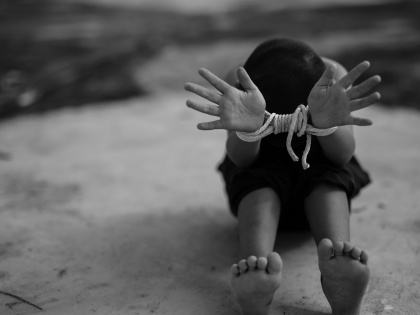An effective reintegration program is a dire need for rescued children
By Anubha Jain | Published: March 21, 2022 04:16 PM2022-03-21T16:16:26+5:302022-03-21T16:18:09+5:30
"In Rajasthan children trafficked are pressed to work in grueling conditions of 14 to 16 hours a day on ...

An effective reintegration program is a dire need for rescued children
"In Rajasthan children trafficked are pressed to work in grueling conditions of 14 to 16 hours a day on meager wages or sometimes without pay. They are forced to work in salt factories, crackers, mining industries; manufacturing of lac bangles, embroidery work, and carpet weaving while in south Rajasthan, they are engaged in farming BT cotton. Jaipur’s Ramganj, Bhatta Basti, Shastri Nagar areas are the hubs for traffickers to sell children for labour," said Pooja Dayma, a child rights activist associated with the Jaipur Child Line, Jankala Sahitya Manch Sanstha JKSMS in Jaipur during an exclusive interview with me. According to the recent survey of the National Human Rights Commission of India, 40,000 children are abducted each year, leaving 11,000 untraced. As per the National Crime Records Bureau (NCRB), a total of 1,48,185 cases of crime against children were registered during 2019, showing an increase of 4.5% over 2018 (1,41,764 cases).
Child trafficking is a big challenge worldwide and affecting a large number of children every day. The subject is a matter of great concern. Poverty, unemployment, and recently the country's economy has been hit hard by the pandemic compelling a large number of children and their families to migrate from backward areas for work, making these children easy prey for trafficking. Children who leave school early are the most vulnerable to exploitation. They would become child laborers, get married at an early age, beg on the streets or even become child criminals.As per the law, people who employ any child/adolescent to work can get minimum imprisonment of six months to two years and a fine of Rs 20000-Rs 50,000. Child trafficking is steadily increasing. Thousands of children go missing in India every year, many of whom are thought to be trafficked mainly for commercial sex work and labour. According to the census of 2011, (980,000) 1 in every 10 children - is a child labourer in Rajasthan. Seeing the increasing rate of child trafficking, the Centre has shown concern over the issue and urged states to keep an eye on deprived families, so they do not sell their children for requirements. As a positive initiative, the National Commission for Protection of Child Rights (NCPCR), tribal ministry, and various NGOs aim to map and link these children with their families through various government welfare schemes.
Pooja Dayma further said that the families of rescued children do not get constant financial support with other government welfare schemes that are essential to mitigate the risk of re-trafficking of those rescued children. Children from Rajasthan cross the border to enter Gujarat to work, but Rajasthan is also a destination state for child labour from West Bengal, Bihar, Uttar Pradesh, Delhi, and Jharkhand. Bihar is a large source of the trafficking of children for forced labour and New Delhi is the transit city for child trafficking. More than half of the working children are concentrated in Bihar, Uttar Pradesh, Rajasthan, Madhya Pradesh, and Maharashtra. Pooja Dayma informed, "In 2014 we rescued a girl from Rajasthan who was sold by her parents for Rs 50,000 to a bar in Mumbai. Now after our involvement, she is happily settled with her family in Rajasthan. Similarly, five boys from Bihar were rescued. They were sent to a bangle factory in Jaipur where they were working for over 18 hours every day."Satya Prakash from FXB India Suraksha (an NGO) highlighted the major loopholes of the government's Reintegration Program. He said that without any follow-ups government’s reintegration program of trafficked children gets over once they are rescued and go back to their families. Rescue raids are often conducted in an ad hoc manner without accountability or monitoring. This leads to an inconsistent filing by the police of First Information Reports (FIRs) of crimes committed, low rates of conviction, and inadequate delivery of post-rescue care for children.
In an interview, Manna Biswas, Child Protection Officer, UNICEF, Rajasthan stated that the process of dealing with rescued children is not well defined and the program needs to be addressed properly. Agencies like District Child Protection Unit, District Child Welfare Committee, and Child Labour Task Force are responsible for charting out rehabilitation plans. Without such a rehabilitation plan, there are high chances that the rescued child will again be caught in the vicious cycle of trafficking due to poverty and hunger.In the end, one can say that the issue of missing and untraced children, based on police records, is a matter of deep concern for Central and State Governments and effective steps need to be taken to stop this malaise. It's the responsibility of the Government to work on a holistic approach for providing a sustainable environment for the rescued children. Government is silent over the issue of rescued children/ women rehabilitation. There are ambiguities in Government Rehabilitation Program. To completely stop re-trafficking of a child, rehabilitation follow-up procedures should be done by various committees formed at different levels, with stringent monitoring. Through NGOs and the government’s involvement, great efforts have been made to terminate trafficking. As a positive outcome, with education and awareness more trafficking FIRs are being filed these days and people are avoiding hiring children. But still, the situation is grim
Open in app